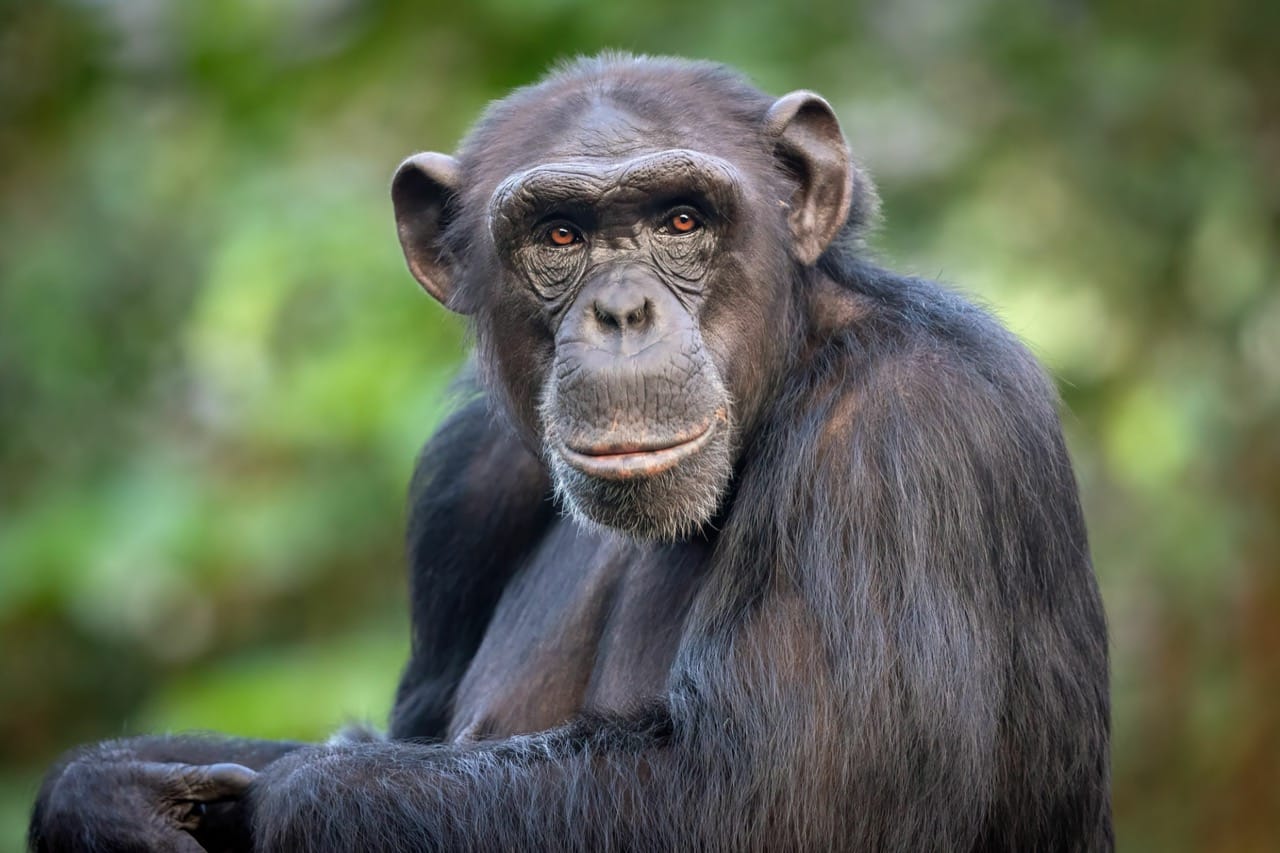Chimpanzees, with their profound intelligence and complex behaviors, stand as one of the most fascinating creatures in the animal kingdom. Sharing about 98.6% of our DNA, they are our closest living relatives, which makes them not only a subject of curiosity but also a mirror reflecting our own evolutionary past. This article delves into the life of the chimpanzee, exploring its physical characteristics, behavior, habitat, and more, providing a comprehensive insight into its world.
Characteristics / Physical Description
Chimpanzees are robust and powerfully built, with males generally weighing between 40 to 70 kilograms and females slightly smaller. Their bodies are covered predominantly with black hair, except for the face, fingers, palms, armpits, and soles of the feet. Their faces are pinkish to black, and the skin texture changes with age. Chimpanzees have long arms that extend beyond their knees, a short body, and no tail, which distinguishes them sharply from other primates. Notably, their faces are expressive, which is crucial for their complex social interactions.
Taxonomy and Classification
Scientifically known as Pan troglodytes, the chimpanzee belongs to the family Hominidae, which includes humans, gorillas, and orangutans. The genus Pan includes two species: the chimpanzee and the bonobo. There are four recognized subspecies of the chimpanzee, which are distinguished by their geographic locations and some genetic differences.
Behavior and Social Structure
Chimpanzees are highly social animals living in communities that can consist of 15 to 150 members, although they are often found in much smaller, more fluid groups. Their social structure is intricate, with relationships and hierarchies that are maintained through grooming, vocalizations, and a variety of other interactions. Male chimpanzees tend to be more dominant and have a strict hierarchy enforced through displays of power and aggression. In contrast, females have a more flexible hierarchy and often focus on nurturing their young and forging alliances through grooming.
Habitat and Distribution
Chimpanzees are found across a wide range of habitats in central and West Africa, from the lush rainforests to savannas and forest-savanna mosaics. They are adaptable and can inhabit both primary and secondary forests, as well as montane forests.
Diet and Feeding Habits
Chimpanzees are omnivores, meaning they eat a varied diet that includes fruits, nuts, seeds, leaves, and sometimes small animals. They are known for their ability to use tools to access food, such as sticks to fish for termites or rocks to crack nuts, showcasing their problem-solving skills and intelligence.
Breeding and Reproduction
Chimpanzees do not have a specific breeding season, and females can give birth at any time of the year. The gestation period is about eight months, and infants are weaned at approximately four years old, although they may continue to have close bonds with their mothers for several years more. Females typically give birth to a single infant about every five to six years, which allows them to dedicate significant time and care to each offspring.
Relationship with Humans
Chimpanzees have fascinated humans for centuries and are a popular subject in zoos and research environments. Unfortunately, this has also led to their decline. Chimpanzees are used in medical research, kept as exotic pets, and hunted for bushmeat. Conservation efforts are crucial for their survival, as habitat destruction and poaching have placed them in the endangered category.
Evolutionary History
Chimpanzees shared a common ancestor with humans approximately six to seven million years ago. The subsequent evolutionary path has seen them adapt to a variety of environments, which is evident in their versatile dietary habits and behavioral adaptations.
Use as Research Animals
Due to their genetic closeness to humans, chimpanzees have been extensively used in medical and behavioral research. They have been vital in studies related to diseases, genetics, and even psychology, although ethical considerations have curtailed their use significantly in recent years.

